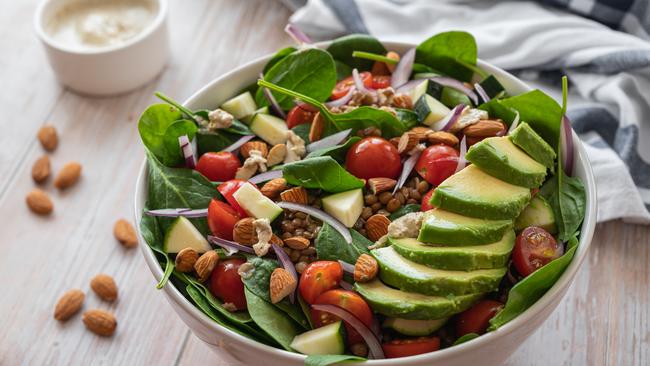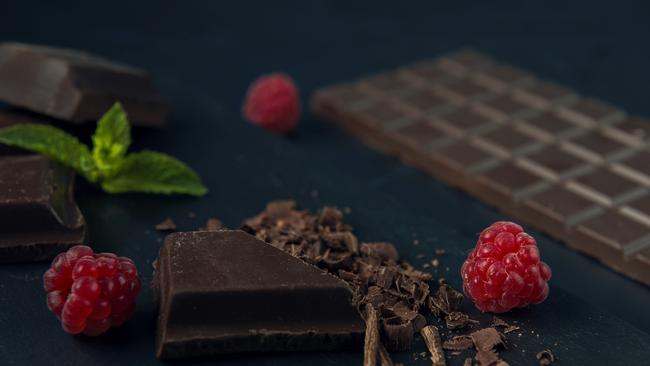Benefits of the ‘buddy system’: 10 food combos that boost nutrient effectiveness
Try these 10 simple and delicious pairings to elevate the nutritional benefits from some of the most common foods and beverages you consume.

In a world of time pressures and deadlines, nutrition often falls to the bottom of our priority list. We all know we should eat better.
You know the drill: more fruit and veg, less chips and beer.
But what if the foods you’re already eating could work even harder for you?
This is the power of nutrient synergy – the idea that some nutrients are better absorbed, more effective, or more powerful when eaten together than when consumed alone.
It’s one of the reasons the Mediterranean diet is so effective for health.
Beyond vitamins and minerals, many plant-based foods contain phytonutrients – natural compounds that can reduce inflammation and act as antioxidants.
However, these compounds can be poorly absorbed or poorly utilised by the body unless paired with the right “companion” nutrient.
When they are, they become supercharged – more bioavailable (meaning your body can absorb and use more of their goodness), and more impactful for your health.
As a busy nutrient scientist, I use these principles in my own kitchen to boost the benefits of everyday foods.
You can too with simple ingredients already in your fridge or pantry.
Here are 10 practical food pairings to help you eat smarter and absorb more from every bite.
Onions and almonds (quercetin, polyphenols and antioxidant vitamins)
Why: Onions are one of the richest dietary sources of quercetin, a flavonoid with powerful antioxidant effects, and they also provide vitamin C. Almonds, particularly the skin, contain polyphenols and are a natural source of vitamin E. Together, these nutrients work synergistically to reduce oxidative stress and stabilise “bad” LDL cholesterol.
Research suggests that when quercetin and almond polyphenols are combined with antioxidant vitamins C and E, they enhance each other’s protective effects, offering benefits for cardiovascular health and inflammation.
Tip: Add caramelised onion and chopped almonds to salads, pilafs or cooked vegies such as green beans. Try blending roasted onion and red capsicum, almonds and olive oil into a romesco-style sauce for a Mediterranean-inspired antioxidant boost.
Oats and citrus fruits (avenanthramides and vitamin C)

Why: Oats are rich in unique polyphenols called avenanthramides, known for their antioxidant properties.
While avenanthramides are generally bioavailable, they exhibit enhanced antioxidant capabilities when combined with vitamin C.
The pairing synergistically enhances the resistance of LDL cholesterol from becoming oxidised – a harmful process that contributes to clogged arteries and heart disease.
Tip: Brighten up your oatmeal with a squeeze of orange juice or add vitamin C-rich fruits such as kiwi or berries for an antioxidant boost.
Cruciferous vegetables and mustard
Why: Cruciferous vegetables such as broccoli, kale and brussels sprouts contain glucosinolates – sulphur-containing compounds with potent cancer-fighting potential.
Their conversion into glucosinolates, the bioactive form, is essential for their health effects.
This conversion is facilitated by the enzyme myrosinase, which is present in brown mustard seeds and enhances the bioavailability and effectiveness of these compounds.
Tip: Add a vinegar-mustard glaze to roast broccoli or sprinkle crushed mustard seeds on to lightly steamed broccoli or cauliflower.
Grapes and onions (polyphenols and sulphur compounds)
Why: Black grapes are rich in catechins and other polyphenols that support cardiovascular and metabolic health, while onions provide quercetin and sulphur compounds with anti-inflammatory and circulatory benefits.
Together, they work synergistically to inhibit blood clots, support circulation and help protect cells from changes that lead to cancer.
This powerful pairing also shows promise in relieving allergy symptoms and protecting vascular health.
Tip: Add sliced red onions and black grapes to salads or pair them in a savoury-sweet chutney to enjoy their combined benefits.
Cooked tomatoes and olive oil (lycopene and fat absorption)

Why: Lycopene, a fat-soluble carotenoid found in tomatoes that gives them their red colour, is an antioxidant that can reduce the risk of cancer and heart disease.
Lycopene is better absorbed when the tomatoes are cooked and combined with a healthy fat such as olive oil. Heat breaks down tomato cell walls, releasing the lycopene and increasing its availability, while the fat improves its absorption and enhances antioxidant activity in the body.
Tip: Gently simmer tomatoes in olive oil for pasta sauce or roast cherry tomatoes in olive oil as a side dish.
Carrots or pumpkin (betacarotene-rich vegies) and healthy fats such as olive oil
Why: Betacarotene is a carotenoid with antioxidant properties that help neutralise free radicals, reducing oxidative stress and supporting immune function.
It also serves as a precursor to vitamin A, which is essential for vision, skin integrity and cellular communication.
However, betacarotene is fat-soluble and trapped within plant cell walls, which limits its bioavailability in raw form.
Cooking softens the cell structure, and consuming these vegetables alongside a source of healthy fat, such as olive oil, significantly enhances intestinal absorption.
This combo helps your body make more vitamin A and use it more effectively to protect your health.
Tip: Roast carrots or pumpkin with olive oil or add avocado or nuts to salads featuring roasted sweet potato for maximum benefit.
Spinach and olive oil (lutein and healthy fats)
Why: Spinach is one of the richest sources of lutein, a carotenoid that supports eye health and plays a key role in brain function.
Higher lutein levels have been linked to better memory, faster processing speed and sharper cognitive performance.
Because lutein is fat-soluble, adding healthy fats such as olive oil to spinach helps your body absorb more of this brain-boosting nutrient.
Tip: Sauté spinach in olive oil or add a generous drizzle of extra virgin olive oil to a fresh spinach salad.

Green tea and citrus fruit (Vitamin C)
Why: Green tea is rich in catechins – antioxidant compounds linked to improved heart health, reduced inflammation and cellular protection.
However, these compounds are unstable in non-acidic environments such as the intestines.
Vitamin C from citrus fruits such as lemon, kumquats or orange peel helps stabilise catechins and significantly boosts their absorption, amplifying green tea’s health benefits.
Tip: Infuse your green tea with slices of lemon, kumquat halves or a twist of fresh orange peel for improved nutrient absorption and flavour.
Berries and yoghurt (anthocyanins and probiotics)
Why: Berries are rich in anthocyanins – potent antioxidants that can reduce inflammation and support long-term health.
Probiotic-rich foods such as yoghurt contain bacterial strains (such as Lactobacillus plantarum and Streptococcus thermophilus) that convert anthocyanins into more bioavailable and bioactive compounds, such as chlorogenic and caffeic acid.
Probiotics also help stabilise anthocyanins in the gut and enhance their absorption.
Tip: Pair fresh or frozen berries with probiotic yoghurt or kefir in smoothies, layer them into a parfait, or stir through oats for a delicious and nutritious boost.
Raspberries and dark chocolate (polyphenols and antioxidant synergy)

Why: Raspberries contain anthocyanins and ellagitannins – types of polyphenols with strong antioxidant properties – while dark chocolate is rich in flavonoids such as catechins and proanthocyanidins.
While pairing them doesn’t increase the total polyphenol content, research shows it significantly boosts antioxidant capacity.
This synergy helps reduce oxidative stress, support heart health and protect against age-related cellular damage.
Tip: Make a simple chocolate raspberry bark by melting dark chocolate with at least 70 per cent cocoa content, spreading it on to baking paper, sprinkling over fresh raspberries and popping it in the freezer until you are ready to enjoy.
Simple combinations of everyday foods such as these can boost your nutrition without breaking the bank – or spending hours in the kitchen.
Carolyn English, PhD, RNutr, is a Senior Teaching Fellow in the Faculty of Health Sciences & Medicine and a nutrition researcher in the Bond University Nutrition and Dietetics Research Group.




To join the conversation, please log in. Don't have an account? Register
Join the conversation, you are commenting as Logout